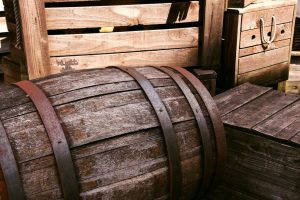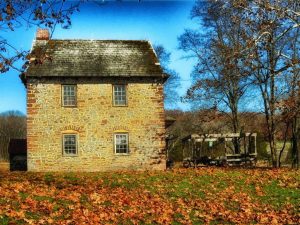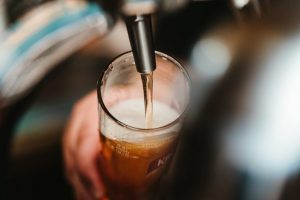Booze, Independence, and Patriotism: The History of America and Alcohol
Since the time of the first European settlers, alcohol has been an integral part of the economy, culture, and history of the US. Unbeknownst to most people, alcohol played a huge role in the Revolutionary War. It has been a major part of United States culture ever since.
This has its downsides—as many as 15 million Americans today suffer from alcohol use disorder. However, it is important to understand how we got to the present, and how booze has helped shaped our nation. Independence Day is a great time to look back at the role of alcohol in American history.
Alcohol in the Colonies

Image by Dean Moriarty from Pixabay
Alcohol has played an important role in American history from the earliest days of the English colonies in North America. Due to lack of modern water sanitation, early Americans drank a wide variety of alcoholic beverages, including beer, wine, cider, whiskey, rum, and alcoholic punches. Colonial Americans are believed to have drunk an average of about eight ounces of alcohol in various beverages each day.
Establishments which served alcohol also played a key social role as community gathering places in the colonies. Taverns and pubs even functioned as assembly halls in which government business was conducted. In Boston, for example, John Turner’s Tavern acted as the city courthouse until the construction of a more formal government building in 1658.
Alcohol and the Revolution
With the coming of the American Revolution, alcohol would play a part in some of the most significant events in the birth of the nation. During his iconic midnight ride, American silversmith Paul Revere famously stopped in Medford, Massachusetts for a drink of rum. Interestingly, rum may have also been the real motivator of the Boston Tea Party. King George had imposed taxes on molasses and sugar, limiting alcohol production, which could have been a bigger reason for the protest.
Alcohol rations were also key to maintaining morale within the Continental Army. During his tenure as commander, George Washington insisted that his troops be supplied with spirits, even going so far as to describe alcoholic beverages as “essential” to his commissary staff.
Taverns took on an even greater importance in revolutionary America. These spaces often hosted events critical to the planning and execution of the revolt against the British. The Raleigh Tavern in Williamsburg hosted members of the Virginia House of Burgesses, among them George Washington and Thomas Jefferson, during their attempt to organize a boycott of British imports. Even more historically significant, perhaps, was the November 1775 raising of a fighting force at Tun Tavern in Philadelphia. That force, consisting initially of just two battalions, would eventually come to be known as the United States Marine Corps.
From Independence to Prohibition

Image by David Mark from Pixabay
In post-Revolutionary War America, alcohol continued to be both an important part of the culture, and a catalyst for major events. One of these was the 1794 Whiskey Rebellion, in which a group of rural distillers living in western Pennsylvania took up arms against the federal government. The driving force behind the rebellion was the government’s attempt to enforce a law establishing an excise tax on whiskey.
13,000 federal troops easily quelled this rebellion. However, the whiskey industry would be one of the many growth stories of the 19th century. From humble beginnings in rural Pennsylvania and Kentucky, the American whiskey trade grew into an enormous business. The years from 1860 to 1900 were particularly notable in this expansion. Several leading distilleries that continue to produce whiskey to this day were founded during this 40-year period. The 19th century was also a time of explosive growth for the beer industry. Between 1850 and 1873, the number of breweries in America shot up from just 431 to 4,131.
By the late 19th century, however, attitudes toward alcohol in America began to shift. This was thanks in large part to the Temperance Movement. This movement argued that alcohol was to blame for a host of moral and social problems afflicting an increasingly urban American population. Temperance groups worked to influence both public opinion and political action by holding rallies and distributing anti-alcohol literature. The movement achieved success in 1919, when the 18th Amendment to the United States Constitution banned the making and selling of alcohol nationwide.
This amendment ushered in the era of Prohibition, which its advocates hoped would put an end to America’s alcohol use. Instead, a now legendary period of gangsters and speakeasies ensued, supplying the population with illegal “bootleg” liquor. It seemed that booze could not be stamped out of American culture. Prohibition did not last past the end of 1933.
Modern Trends in American Alcohol Consumption

Image by BENCE BOROS from Unsplash
Since the end of Prohibition, America has continued its long-standing love affair with alcohol. Today, approximately 73 percent of the adult American population consumes it. Tastes, however, continue to evolve. American consumers are increasingly turning to craft beers and small-batch whiskeys over the mass-produced beverages that were more popular 30 years ago. And, particularly in the case of beer, the US alcohol industry is inclining toward higher alcohol concentrations.
Around Independence Day, it can be fascinating to look back at how beers, wines, and spirits contributed to American history. At the same time, it’s important to remember that drinking can have health risks, especially in excess. While early American settlers may have drank consistently, we now know much more about alcohol’s impact on the brain and body. We also have cleaner drinking water and higher life expectancies!
At the end of the day, unless you’ve quit drinking, moderation is the best way to celebrate this holiday. There are some good rules to keep in mind, including keeping off the roads (or water) if you’ve had too many, and staying on top of hydration in the summer heat. And if you’ve been feeling like you’d like to cut back more generally, there are programs like Ria Health that can help you do that on the terms that work best for you.
Otherwise, should you choose to drink this Independence Day, raise a toast to our founders and enjoy responsibly!
Will insurance cover treatment? Verify Coverage
Have Questions? Call (800) 504-5360



